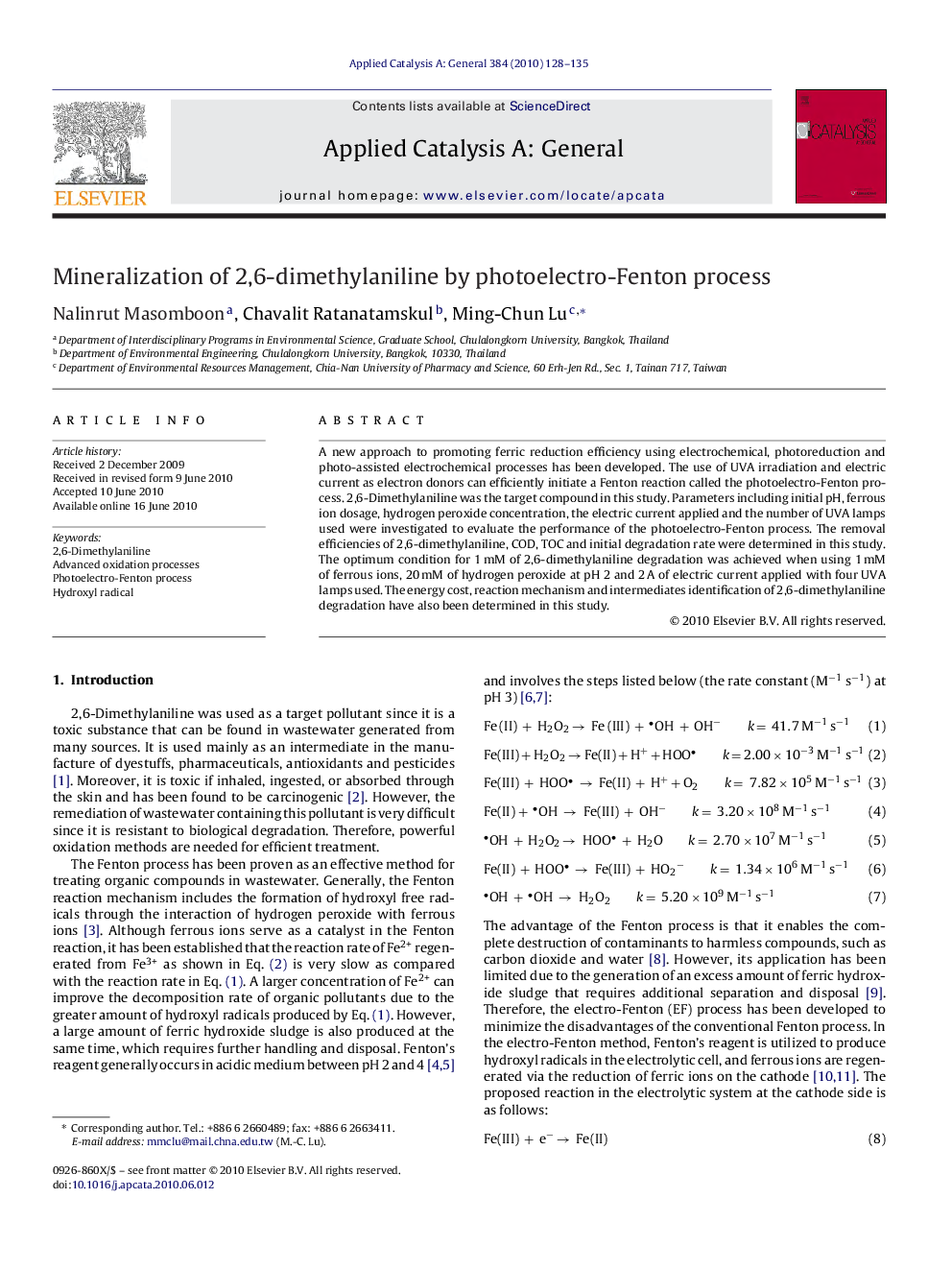| Article ID | Journal | Published Year | Pages | File Type |
|---|---|---|---|---|
| 41945 | Applied Catalysis A: General | 2010 | 8 Pages |
A new approach to promoting ferric reduction efficiency using electrochemical, photoreduction and photo-assisted electrochemical processes has been developed. The use of UVA irradiation and electric current as electron donors can efficiently initiate a Fenton reaction called the photoelectro-Fenton process. 2,6-Dimethylaniline was the target compound in this study. Parameters including initial pH, ferrous ion dosage, hydrogen peroxide concentration, the electric current applied and the number of UVA lamps used were investigated to evaluate the performance of the photoelectro-Fenton process. The removal efficiencies of 2,6-dimethylaniline, COD, TOC and initial degradation rate were determined in this study. The optimum condition for 1 mM of 2,6-dimethylaniline degradation was achieved when using 1 mM of ferrous ions, 20 mM of hydrogen peroxide at pH 2 and 2 A of electric current applied with four UVA lamps used. The energy cost, reaction mechanism and intermediates identification of 2,6-dimethylaniline degradation have also been determined in this study.
Graphical abstractFigure optionsDownload full-size imageDownload high-quality image (93 K)Download as PowerPoint slideResearch highlights▶ Our study applied a new approach to promoting ferric reduction efficiency using electrochemical, photoreduction and photo-assisted electrochemical processes. ▶ The target chemical is 2,6-dimethylaniline which is a new chemical for photoelectro-Fenton process and from literature review we found that no one uses it before. ▶ Moreover, the energy cost, reaction mechanism and intermediates identification of 2,6-dimethylaniline degradation were also determined in this study and gave a valuable knowledge. ▶ The technologies that we applied in our study are a clean technology, using cheap chemicals, available in environment and non-toxic. Therefore, we believe that our research is useful not only for the scientific knowledge but also for the environment.
